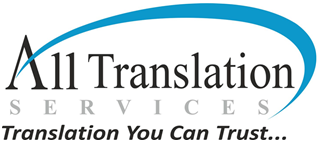Understanding Unicode Fonts and TrueType Fonts: A Deep Dive
___Looking for a local language translation service provider in Abbotsford, Brampton, British Columbia, Calgary, Canada, or in Edmonton? Our Toronto translation company will be happy to help you.
What is Unicode?
Before diving into Unicode fonts, it’s essential to grasp what Unicode itself entails. Unicode is a universal character encoding standard that aims to maintain a consistent representation of text across different systems and platforms. It assigns a unique code point to every character, no matter the language, making it possible to use multiple languages simultaneously with ease. As of my last update, Unicode has the capacity to encode over 143,000 characters covering 154 modern and historic scripts, as well as emoji and symbols.
Unicode Fonts: The Multilingual Enablers
Definition: Unicode fonts are those that support the Unicode standard, containing a wide array of characters from different languages. These fonts are designed to cover multiple scripts (like Latin, Cyrillic, Greek, Arabic, and many more) within a single font file, facilitating global communication and digital preservation of diverse languages.
Key Features:
– Multilingual Support: They can display a vast range of characters and symbols from various languages.
– Compatibility: Unicode fonts ensure that text appears the same across different systems, as long as the font used supports those Unicode characters.
– Versatility: Ideal for documents or content that requires the use of multiple languages.
Examples: Arial Unicode MS, Times New Roman, and Google Noto fonts. The Noto font family, for instance, aims to support all the scripts encoded in the Unicode standard.
TrueType Fonts (TTF): A Standard in Digital Typography
Definition: TrueType is a font format developed in the late 1980s by Apple and later adopted by Microsoft. It became one of the most common formats for fonts on both Macintosh and Windows operating systems. TrueType fonts are characterized by their use of a single file that contains both screen and print font data, using quadratic Bézier curves for more precise control of shapes.
Key Features:
– Scalability: They can be scaled to any size without losing quality, thanks to their vector format.
– Ease of Installation: TTFs can be easily installed and used on various operating systems without the need for multiple files.
– Control: Provides font designers with precise control over how fonts are displayed at different sizes through the use of hinting.
– Usage: TrueType fonts are widely used in both personal and professional contexts, from document creation to graphic design.
Differences
While Unicode and TrueType might seem similar at first glance, they serve different purposes in the world of digital typography:
– Scope: Unicode is a character encoding standard that covers text representation across multiple languages, whereas TrueType is a font format that defines the appearance of texts on digital displays.
– Functionality: Unicode fonts focus on the encoding and representation of character sets from different languages. In contrast, TrueType fonts emphasize the precise rendering and quality of typefaces, regardless of the encoding.
– Compatibility: A TrueType font can be a Unicode font if it supports a wide range of Unicode characters, but not all TrueType fonts are Unicode fonts, especially those designed for specific languages or symbols.
Conclusion
In the digital age, understanding the nuances between Unicode fonts and TrueType fonts is crucial for anyone involved in digital typography, web design, or multilingual document preparation. While Unicode provides a comprehensive framework for representing a vast array of global characters, TrueType offers a robust format for rendering text with high quality and precision. Together, they play pivotal roles in the modern digital typography landscape, ensuring text is accessible, legible, and consistent across diverse platforms and languages.
